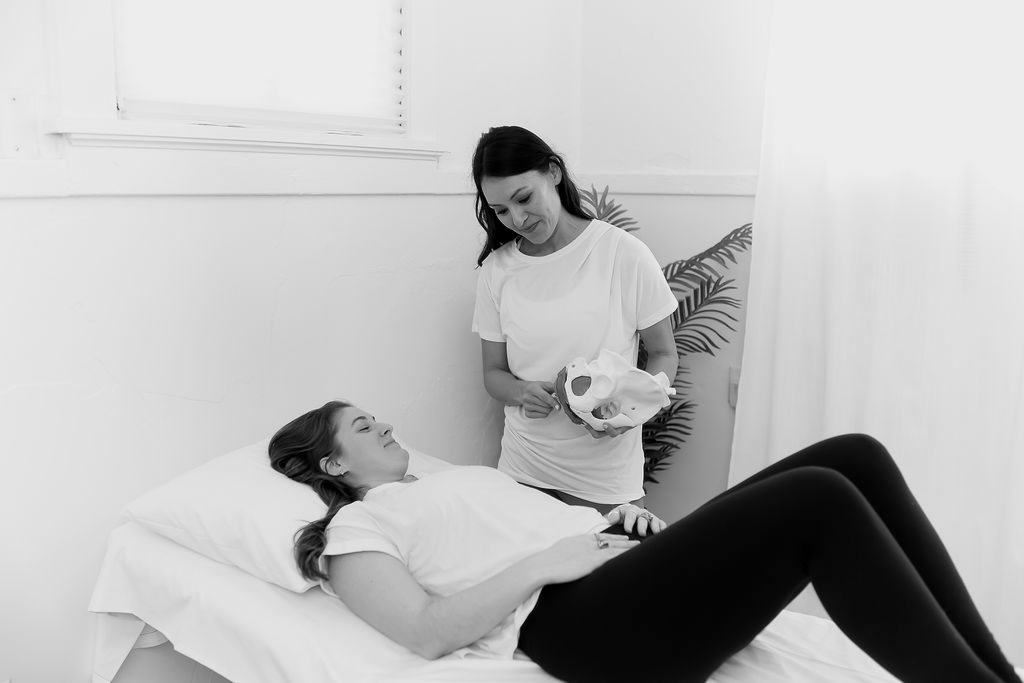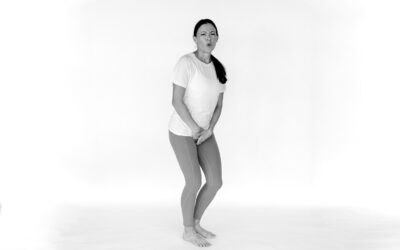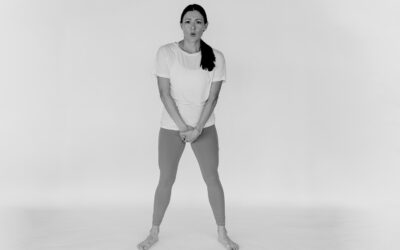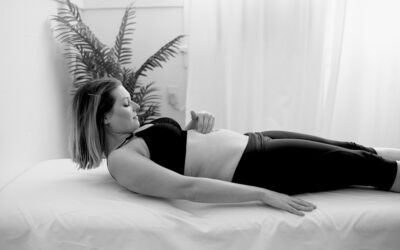Interstitial cystitis (IC), also called bladder pain syndrome (BPS), is a chronic condition causing pelvic discomfort and urinary symptoms. While its exact cause is unknown, research shows that pelvic floor dysfunction often plays a key role in symptom flare-ups.1 Keep reading to learn evidence-based strategies to help manage symptoms – including interstitial cystitis pelvic floor exercises.
What is interstitial cystitis?
Interstitial cystitis/bladder pain syndrome (IC/BPS) is a chronic bladder condition that may affect up to 6% of women.1,2 It’s characterized by persistent bladder pain and urinary symptoms, lasting over 6 weeks. With IC/PBS, you don’t have an infection or any other identifiable cause for your symptoms.
Symptoms usually include:3
- Pain or discomfort (like pressure) that feels like it’s coming from your bladder/lower abdominal area
- Burning while peeing (dysuria)
- Frequent peeing (10+ times a day)1
- Strong urinary urgency
- Pain during or after sex (dyspareunia)
- Pain with bladder filling
With IC/PBS you may also have Hunner’s lesions (small ulcers on the inside wall of your bladder that can be seen on cystoscopy) and tenderness in the pelvic floor muscles.4,1
Interstitial cystitis pelvic floor exercises for relief
IC/PBS can affect everyone differently, so there isn’t a one-size-fits-all exercise program to help relieve symptoms. But experts recommend focusing on interstitial cystitis pelvic floor exercises that relieve muscle knots and tension in the hips, abdominals, and pelvic floor, as well as finding ways to manage stress — all of which pelvic floor exercises can help with.1
Relaxation-focused exercises can help reduce muscle spasms, improve bladder control, and alleviate pelvic pain. Try these four pelvic floor exercises for interstitial cystitis.
1. Diaphragmatic breathing
- Sit or lie comfortably, placing one hand on your chest and the other on your abdomen
- Inhale deeply through your nose, letting your belly rise while keeping your chest still
- Exhale slowly through pursed lips, engaging your deep core muscles
- Repeat for 5-10 minutes daily
2. Cobra stretch
- Lie face down with palms under shoulders.
- Press the tops of your feet down, engage your legs, and inhale to lift your chest up
- Hold for 30 seconds or 5 breaths, focusing on relaxing and lengthening
- Exhale and lower down
3. Knee-to-chest stretch
- Lie on your back and stretch your legs out straight
- Pull one knee to your chest, holding with both hands
- Breathe deeply and hold for 30 seconds, then release
- Repeat on the other side
3. Happy baby pose
- Lie on your back, knees bent toward your armpits
- Hold the outsides of your feet, rocking gently side-to-side
- Breathe deeply into your pelvic floor for 1-2 minutes
What to avoid with Interstitial Cystitis
When you have IC, symptoms tend to come and go throughout life. So, in addition to managing your interstitial cystitis with pelvic floor exercises, it can help to avoid or adjust certain things in your diet, behaviors, or daily habits that worsen your symptoms.
Here are some things that may be helpful to avoid:
- Dietary irritants (like caffeine, alcohol, citrus, spicy foods, artificial sweeteners)
- Tight clothing (like tight jeans or shapewear)
- Limiting water intake
- Stress
- Certain exercises (high-impact or more intense activities can trigger symptoms for some folks)
- Pelvic floor exercises that only focus on strengthening (Kegels)
If you’re not sure what’s causing your symptoms, it can help to keep a symptom journal to identify what is personally triggering for you.
Additional symptom management strategies
Beyond managing your interstitial cystitis with pelvic floor exercises, here are some other symptoms management strategies to consider for IC patients:
- Pelvic floor physical therapy: Includes bladder retraining, urge suppression techniques, and manual therapy
- Low-impact exercises: Walking, swimming, or using an elliptical machine
- Stress management: Meditation, gentle yoga, or massage
- Medical management: Pain medications, bladder instillations, low-pressure hydrodistension, or in severe cases, Botox injections or surgery
Take control and calm your interstitial cystitis symptoms
Pelvic floor dysfunction significantly impacts interstitial cystitis (IC) symptoms, but targeted exercises and relaxation techniques may provide relief. While IC often requires ongoing management, evidence-based techniques can help reduce symptom flare-ups and improve your quality of life.
If you’re experiencing IC/PBS symptoms, relaxing your pelvic floor muscles could offer welcome relief. The V-Hive Pelvic Floor Relaxation Series, available exclusively to members, provides expert guidance on effective relaxation techniques. With this program, you can learn pelvic floor exercises to ease pelvic floor tension and find self-help products to support your progress. Try these workouts for yourself with a 7-day free trial!
References
- Clemens, J.Q., et al. (2022). Diagnosis and treatment of interstitial cystitis/bladder pain syndrome. J Urol.
- IC-Network.com. (n.d.). Millions of men, women & children suffer from IC.
- Urologyhealth.org. (2023). What is interstitial cystitis(IC)/bladder pain syndrome?
- Teichman J.M. (2009). Hunner’s lesions. Can Urol Assoc J.




